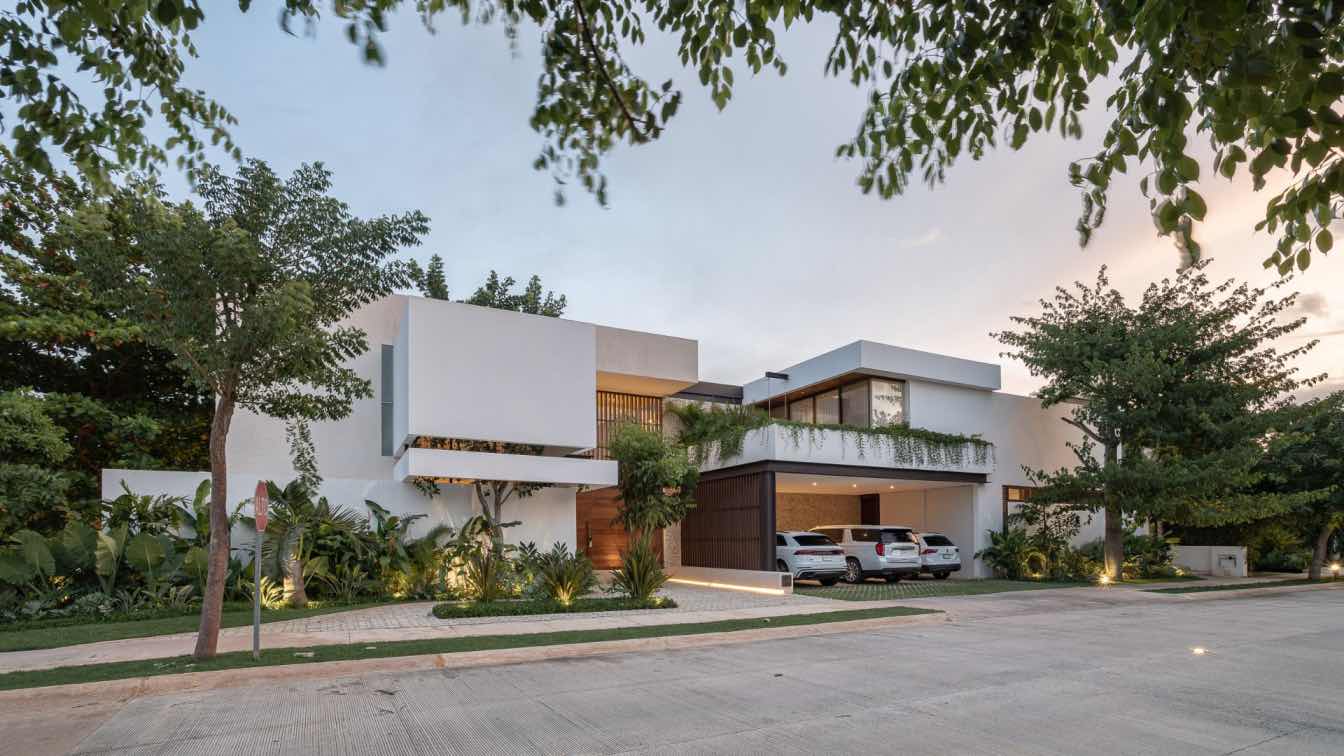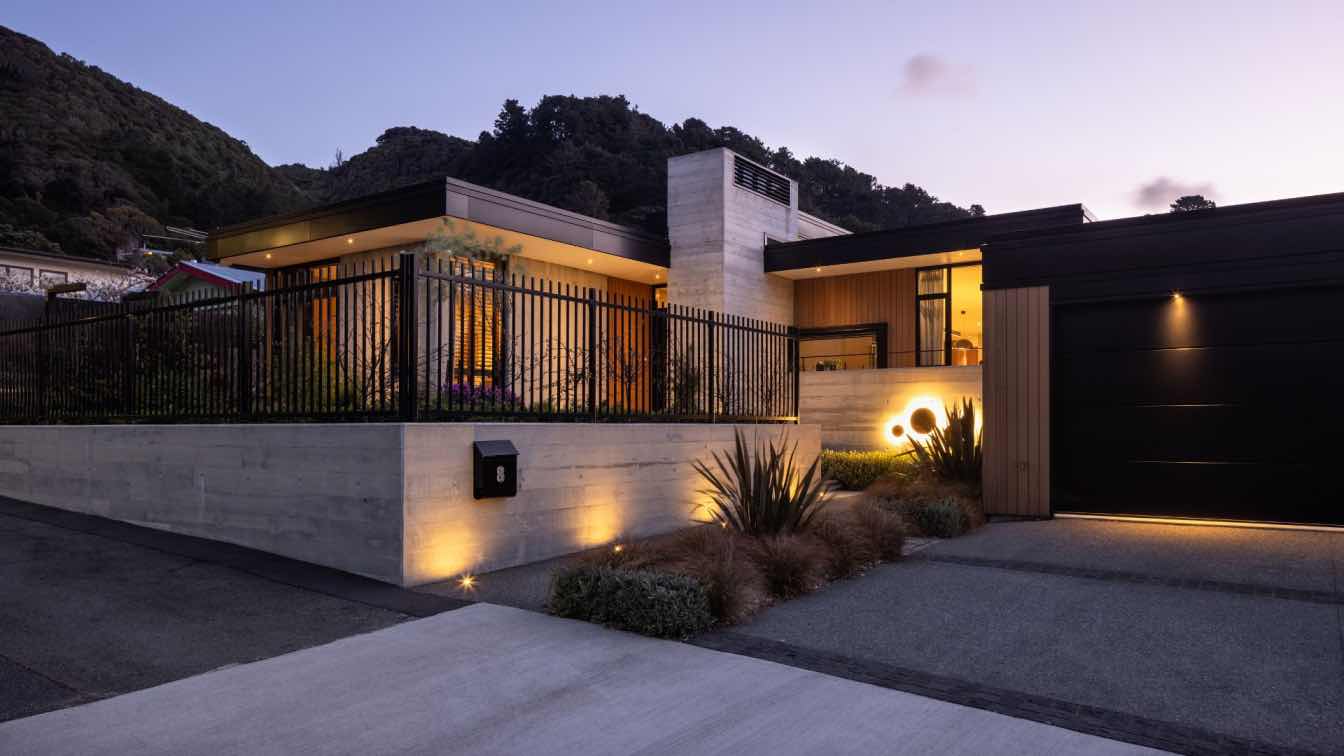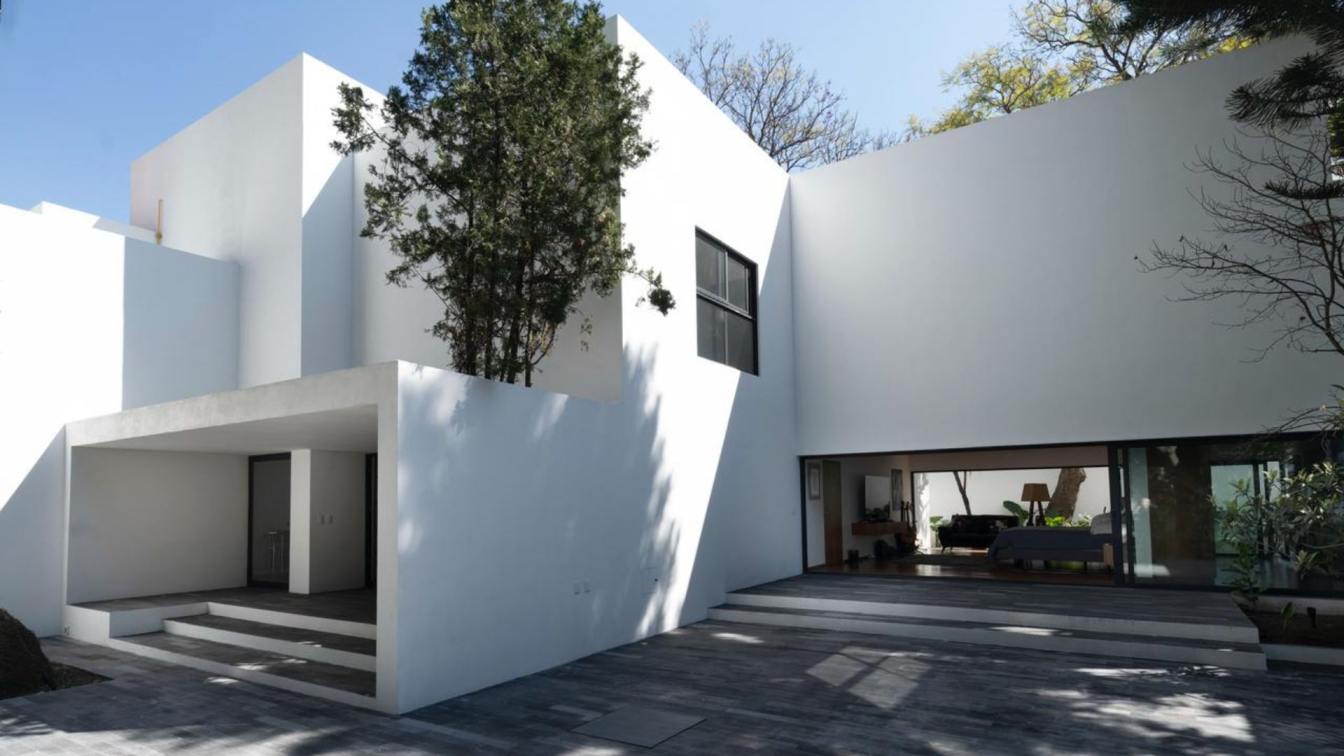R79: Located on a 1,300m2 lot as the result of the merge between two smaller ones, located in a private residential in northern Merida, this 1,000 m2 house is a new proposal of a Terrace House, seeking to blur the line between interior and exterior, achieving a fluid, dynamic, enlightened space that uses both pre-existing and proposed vegetation as a guiding design tool.
A corner lot facing north-south without trees but with an important amount of vegetation on its eastern side in a strip form contiguous to the common area, this group of flora became the starting point of the design as we seek to incorporate this green sensation with the void of the house.
It has a very simple distribution plan with service areas on the west, social areas facing the south garden, and private areas facing north, south or both. The front facade is quite blind, plain wall lacking of windows having just what is a strict necessity, but invaded by green courtyards that give a fresh and casual mood to the house.
Most of the spaces are facing to green areas, the stairs feel like floating between gardens and are discovered as soon as you access the main entrance. The secondary access, the daily one, is also through a courtyard; an entrance hall and a view of the kitchen, a double-height open space with a tree as protagonist. The main circulation ends at one end with a void at both levels, this has an outward view towards the street, and the borrowed, stolen nature, the one that at the beginning was decided to become part of the proposal. On its way to the opposite end, it is accompanied by another double-height interior courtyard, this time covered, which becomes the finishing touch to the social areas and accompaniment that emphasizes the two most important spaces, the kitchen and the master bedroom.

The configuration of the house combines double-height spaces with other single-height spaces, merging both levels and highlighting the fluidity that is perceived from one side to the other, the Monospace.
The double-height terrace is suddenly interrupted by a tree and a mezzanine off the master bedroom. Again, seeking to merge the above with the below, the social space with the private, the inside with the outside. Its other end is flanked by a sculpture that rises from the floor. As a finishing touch in the south courtyard, a sunken bar is proposed, a space that first goes up and then down half a level to create an orchard at the top and a living room half a level down. To access this, again the vegetation is used as an accompaniment, some planters that unfold as a carpet while the steps of the stairs immerse you and provide privacy.
The bedroom of the youngest daughter presents an introverted character, blind and private to the outside by means of a plain wall that protects behind it the view to a tree, open and illuminated, with the possibility of using this space as a balcony for serenades, of course, always protected by the head of the family who has his study exactly below and whose view and where this tree is born are part of and have been carefully thought out.
The master bathroom has an extension to a private terrace, this provides light to it and has planters that serve as visual finishes, decoration and privacy. A space not to be missed is the children's playroom, where again the simple and medium heights are played with, but this time the space grows downwards instead of upwards. The sense of protection that lowering half a level confers also has the purpose of creating another angle to enjoy the views.
The color palette uses white, beige, cream and brown tones, accentuated by the green of the vegetation. The range of materials used, such as polished or rustic stone, wood in different shades, formats and finishes, or the modernity conferred by glass, aluminum and steel, are some of the elements that make up the chromatic and compositional strategy.





























